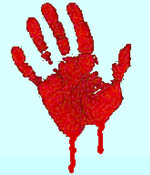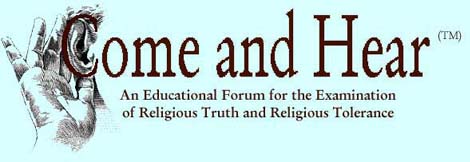
The Roadmap | |||||||||||||||||||||||||||||||||||||||||
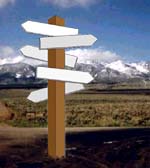 The Roadmap — Let the Rabbis tell us about the Talmud. Why is this fundamental book of Judaism unknown to most Americans?

Adam and Eve Banished from the Garden of Eden (17) 
Noah's Ark surviving the Great Flood  The Exegetical Process for deriving wisdom and law from Scripture. In some measure it depends on the choice and placement of the lenses, mirrors, etc. 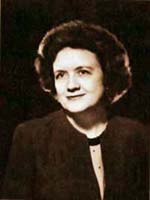
Elizabeth Dilling speaks on Talmud exegesis: More on the Exegetical Process … 
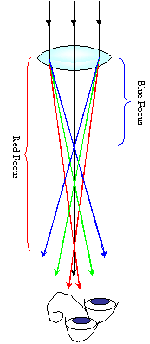
"The Jew must have a religion which would not only continually distinguish him from the heathen, but would likewise be a constant reminder to him that he was a member of the Jewish race and faith …  "No particular English version of the Bible is followed, as the Talmud has its own method of exegesis and its own way of understanding Biblical verses which it cites." — Rabbi Dr. Epstein (19)

 "It is perhaps remarkable that a verse, the literal meaning of which is obviously permission to enjoy, should be interpreted as a series of prohibitions. Yet it is quite in keeping with the character of the Talmud: freedom to enjoy must be limited by moral and social considerations, and indeed only attains its highest value when so limited." — Rabbi Dr. H. Freedman (11) 
The Mind of Akiba per Chief Rabbi Dr. J. H. Hertz: 
The Mind of Akiba per Rabbi Michael L. Rodkinson: 
Devoted Teachers 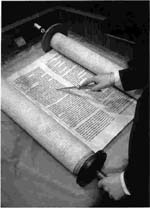
Whence do we know this? — R. Johanan answered: The Writ saith: And the Lord God commanded the man saying, of every tree of the garden thou mayest freely eat. — Tractate Sanhedrin 56b 
You can help in the battle for Truth, Justice, and the American Way! Fight the forces of censorship and suppression of the Talmud, and bring about understanding between peoples of different faiths. |
"… exegesis in the largest sense of the word is in a way — Jewish Encyclopedia (1) Exegesis is the process of studying a piece of text and from it deriving meaning that is not immediately apparent. The roots of the word are Greek: ex, out of + hegeisthai, lead. Exegesis is not unlike extrapolation, whereby unknown information is inferred by extending or projecting known information. Talmud exegesis has a distinctive quality; unless we understand it, the Talmud is baffling. Because the Talmud is finding its way into American law, so also will come Talmud exegetical methods. Good citizenship will require Americans to understand the process. In Order of Appearance …When studying the Talmud, we notice the Sages refer to Scripture ("Written Law"). We might suppose that, in the history of Judaism, the Sages first studied the Scriptures, and then extrapolated additional laws. According to Jewish experts, the actual history is somewhat different. The Jewish people had long been living by traditional "Oral Law" or "the traditions of the elders" about which Jesus of Nazareth spoke:
— Matthew 15:1-3, 12-14 (KJV) At some point, the Jewish leadership decided it was important to show that "the traditions of the elders" (Oral Law) had a basis in Scripture (Written Law). Rabbi Akiba, who lived between 50 and 135 A.D., is recognized as particularly adept at this task. He researched Scripture and assigned ex post facto Scriptural support for "almost every provision of Oral Law." In this passage, Rabbi Michael L. Rodkinson tells us about Rabbi Akiba's efforts. Through his keen intellect, his vast learning and his energetic activity he wielded a great influence in developing and diffusing the traditional law. He arranged the accumulated material of that law in a proper system and methodical order, and enriched its substance with many valuable deductions of his own … Besides, he introduced a new method of interpreting the Scriptures, which enabled him to find a biblical basis for almost every provision of the oral law. This ingenious method was admired by his contemporaries, and notwithstanding the opposition of some of his colleagues, generally adopted in addition to the hermeneutic rules of R. Ishmael. — Rabbi Rodkinson, (14) (emphasis added) The Very Reverend the Chief Rabbi of the British Empire, the late Dr. J.H. Hertz, also praised Akiba for his exegetic achievements. In the following generation, Akiba was the author of a collection of traditional laws out of which the Mishnah actually grew. He was the greatest among the rabbis of his own and of succeeding times, the man of whom — as the legend says — even Moses was for a moment jealous when in a vision he was given a glimpse of the distant future. His keen and penetrating intellect enabled him to find a Biblical basis for every provision of Oral Law. — Rabbi Dr. Hertz (15)(emphasis added) Not all Talmud students have a high opinion of Talmud exegesis. A reach here, and a grab there, and the Pharisee "Sages" make their own Satanic meaning out of unrelated scriptural verses, plays on words, and other childish devices. — Elizabeth Dilling (20) Non-Discrete Use of LanguageWhat is the process to which Dilling refers? The Talmud Sages formulated a number of exegetical methods. We will consider one of the more frequently encountered forms, which we might call "associative inference." Associative inference depends on a non-discrete use of language. From the viewpoint of Western thought, this is a non-rational use of language, and it deserves a thoughtful consideration. Let us take a hypothetical example, using a simple sentence, "Henry sees a cat," as though it were a Scriptural statement. In this form of exegesis, we examine our scripture and find another verse that states, "The cat is sitting on the chair." From this second sentence, we perform the unusual process of permanently associating "cat" with "sitting" and "chair." With this association now in force, we look back at the first sentence, and find new meaning. We now discover that the first verse ("Henry sees a cat") is also a statement about chairs and sitting. Now let us see this method at work in the Talmud. Exegesis at WorkAt some time in their history, the Jews began making separate laws for the Gentiles that lived among them. Those laws were codified and associated with the Scriptural story of Noah, and came to be known as the "Noahide Laws." Formulation of the Noahide Laws is varied in the Talmud, but the following appears to be the final form: GEMARA. … Our Rabbis taught: seven precepts were … commanded: social laws; (5) to refrain from blasphemy, idolatry; adultery; bloodshed; robbery; and eating flesh cut from a living animal. (1) — Babylonian Talmud, Tractate Sanhedrin 56a The translator, Rabbi Dr. H. Freedman, amplifies the text with footnotes:
— Rabbi Dr. Freedman Let us enumerate the seven Noahide Laws that the Jews feel are binding on all Gentiles:
In a subsequent passage, Sanhedrin 56b, R. Johanan seeks to prove by exegesis that the Noahide Laws were given to Man at the time of Creation. The technique of exegesis in this case is primarily the process illustrated above in our "cat" example, that is, identifying verses with parallel wording. Let us see R. Johanan's full statement first. GEMARA. … R. Johanan answered: The Writ saith: And the Lord God commanded the man saying, of every tree of the garden thou mayest freely eat. And [He] commanded, refers to [the observance of] social laws, and thus it is written, For I know him, that he will command his children and his household after him, and they shall keep the way of the Lord, to do justice and judgment. The Lord — is [a prohibition against] blasphemy, and thus it is written, and he that blasphemeth the name of the Lord, he shall surely be put to death. God — is [an injunction against] idolatry, and thus it is written, Thou shalt have no other gods before Me. The man — refers to bloodshed [murder], and thus it is written, Whoso sheddeth man's blood, by man shall his blood be shed. Saying — refers to adultery, and thus it is written, They say, If a man put away his wife, and she go from him, and became another man's. Of every tree of the garden — but not of robbery. Thou mayest freely eat — but not flesh cut from a living animal. — Babylonian Talmud, Tractate Sanhedrin 56b Now let us study each step of the process in turn to see how a Biblical basis is found for the Oral Law concerning the Gentiles, i.e., the Noahide Laws. Step by Step ExegesisStep 1 of Exegesis: The Sage R. Johanan tells us the verse he is using for his exegesis: GEMARA. … The Writ saith: And the Lord God commanded the man saying, of every tree of the garden thou mayest freely eat. (4) — Babylonian Talmud, Tractate Sanhedrin 56b The translator, Rabbi Dr. Freedman, identifies the verse in a footnote as Genesis 2:16.
— Rabbi Dr. Freedman We note that the rendition of Genesis 2:16 in the Talmud closely resembles the King James Version of the same verse.
— Genesis 2:16 (KJV) Step 2 of Exegesis: R. Johanan finds a second Biblical verse that contains two elements: the word "command" and a mention of "justice." GEMARA. … And [He] commanded, refers to [the observance of] social laws, and thus it is written, For I know him, that he will command his children and his household after him, and they shall keep the way of the Lord, to do justice and judgment. (1) — Babylonian Talmud, Tractate Sanhedrin 56b The translator, Rabbi Dr. Freedman, identifies the second verse in a footnote as Genesis 18:19.
— Rabbi Dr. Freedman Now we can see R. Johanan in his exegetical process. He couples the word "command" in Genesis 2:16 with the word "command" in Genesis 18:19. Since Genesis 18:19 also contains the words "justice and judgment," R. Johanan concludes that the mention of "command" in the Genesis 2:16 also carries the implication of "justice and judgment." ("And [He] commanded, refers to [the observance of] social laws …" says R. Johanan.) Step 3 of Exegesis: Now, R. Johanan continues his exegesis. Taking the words, "the Lord" from his original verse, Genesis 2:16 (above), he finds another verse, this one containing the words "the Lord" and "blasphemy": GEMARA. … The Lord — is [a prohibition against] blasphemy, and thus it is written, and he that blasphemeth the name of the Lord, he shall surely be put to death. (2) — Babylonian Talmud, Tractate Sanhedrin 56b The translator, Rabbi Dr. Freedman, identifies this third verse in a footnote as Leviticus 24:16.
— Rabbi Dr. Freedman Again, because Leviticus 24:16 contains both the word "Lord" and the word "blasphemy," R. Johanan concludes that Genesis 2:16 contains a prohibition against "blasphemy." Step 4 of Exegesis: R. Johanan's exegesis continues with the word "God." He selects a fourth verse that contains both "God" and the concept of idolatry: GEMARA. … God — is [an injunction against] idolatry, and thus it is written, Thou shalt have no other gods before Me. (3) — Babylonian Talmud, Tractate Sanhedrin 56b The translator, Rabbi Dr. Freedman, identifies this fourth verse in a footnote as Exodus 20:3.
— Rabbi Dr. Freedman By this exegesis, R. Johanan asserts that Genesis 2:16 contains the commandment to refrain from idolatry. Step 5 of Exegesis: R. Johanan continues with the words "the man" and a fifth verse. GEMARA. … The man — refers to bloodshed [murder], and thus it is written, Whoso sheddeth man's blood, by man shall his blood be shed. (4) — Babylonian Talmud, Tractate Sanhedrin 56b The translator, Rabbi Dr. Freedman, identifies this fifth verse in a footnote as Genesis 9:6.
— Rabbi Dr. Freedman By this exegesis, R. Johanan asserts that Genesis 2:16 contains the commandment to refrain from murder. Step 6 of Exegesis: Now, R. Johanan continues. He finds a verse that contains both "saying" and adultery. GEMARA. … Saying — refers to adultery, and thus it is written, They say, If a man put away his wife, and she go from him, and became another man's. (5) — Babylonian Talmud, Tractate Sanhedrin 56b The translator, Rabbi Dr. Freedman, identifies this sixth verse in a footnote as Jeremiah 3:1.
— Rabbi Dr. Freedman Because the two words, "say" and "adultery" appear together in the Jeremiah verse, R. Johanan infers that the word "saying" in the Genesis verse implies adultery. The Bible Timeline (8) estimates that Jeremiah was written 600 years after the books of Moses (Genesis, Exodus, Leviticus, Numbers, and Deuteronomy). Recall that R. Johanan is performing exegesis on Genesis 2:16. Step 7 of Exegesis: R. Johanan's exegesis continues with the words "of every tree of the garden" and an inherent inference. GEMARA. … Of every tree of the garden — but not of robbery. (6) — Babylonian Talmud, Tractate Sanhedrin 56b The translator, Rabbi Dr. Freedman, amplifies the text with a footnote:
— Rabbi Dr. Freedman Thus, according to R. Johanan, Genesis 2:16 contains the prohibition against robbery. Step 8 of Exegesis: R. Johanan's exegesis concludes with the words "thou mayest freely eat" and another inherent inference. GEMARA. … Thou mayest freely eat — but not flesh cut from a living animal. (7) — Babylonian Talmud, Tractate Sanhedrin 56b How does R. Johanan get from "thou mayest freely eat" to a prohibition against eating the "flesh cut from a living animal"? The translator, Rabbi Dr. Freedman, explains in a footnote, and goes on to comment on the exegesis of the whole verse.
— Rabbi Dr. Freedman Thus, Rabbi Dr. Freedman concurs with R. Johanan: Genesis 2:16 contains the prohibition against eating a limb cut from a living animal, and the other six Noahide Laws as well. To recap, Genesis 2:16 (And the LORD God commanded the man, saying, Of every tree of the garden thou mayest freely eat) is shown to contain all of the Seven Noahide Laws:
And because they were given to Adam at Creation, the seven Noahide Laws are binding upon all men. The Noahide laws are exegetically associated with other Biblical bases. Search for "Noah" and "Noachide" with the Come and Hear™ Search Engine. There are many other examples of exegesis in the Talmud, and examples can be found in almost every folio. As well, there are other kinds of exegesis. Tractate Sanhedrin is one of the more interesting tractates for the beginning reader, and is rich with exegesis. Exegesis — Israel's "One Indigenous Science"Let us revisit the Jewish Encyclopedia: Israel has been called "the People of the Book"; it may as fitly be called "the people of Scripture exegesis," for exegesis in the largest sense of the word is in a way the one indigenous science which Israel has created and developed, after having produced, during the first long period of its history, the actual subject of this science, the Bible itself. — Jewish Encyclopedia (1) (emphasis added) The Jewish Encyclopedia continues with naming the great developers of the science of exegesis: The period between the destruction of Jerusalem and the Hadrianic war was the most fruitful and important epoch for early exegesis, and its representatives were Johanan b. Zakkai's pupils and their disciples. Chief among these in the field of halakic exegesis are Ishmael b. Elisha and Akiba ben Joseph … — Jewish Encyclopedia (4) The Universal Jewish Encyclopedia continues the history, describing some of the achievements: Ishmael expanded Hillel's seven rules into thirteen … Akiba, on the other hand, took the view that every word of the Scriptures, even apparently insignificant particles, had a significance for the derivation of the Halachah. Akiba's work was continued by his pupils, one of whom, Eliezer, formulated thirty-two rules for Halachic interpretation. — Universal Jewish Encyclopedia (5) And the Jewish Encyclopedia expands on a description of Akiba's achievements. Akiba, imbued with the incomparable importance of the Biblical text, successfully defended the opinion he derived from his teacher, Nahum of Gimzo, that not even what might seem to be the most insignificant word of the text was without its especial meaning; hence everything contained in the text must become the subject of interpretation. — Jewish Encyclopedia (6) The history continues, of course, down through the ages, for the development and purification of Jewish law, philosophy, and mysticism did not cease. Numerology and CiphersThere are other exegesis techniques, aside from those we have examined above. Professor E.M. Butler, in his book, Ritual Magic, describes some techniques based on numerology and ciphers. See the Appendix: Practical Kabbalah, "A Veritable Storehouse for Magicians …" Exegesis in American LawWe have seen weaker forms of exegesis in American law since its founding, of course. Let us hark to the words of Rabbi Dr. J.H. Hertz as he writes of the Torah-Talmud: … but the revelation, the real Torah, was the meaning of that Written Text, the Divine thought therein disclosed, as unfolded in ever greater richness of detail by successive generations of devoted teachers … — Rabbi Dr. Hertz (3) Given any Article in the Bill of Rights, the plain language reading does not necessarily govern in the present-day American legal system. The United States Constitution has "evolved" through successive interpretations (exegeses) by judges; in this case, rather than the Torah, the judges are unfolding the "living Constitution." Now comes the Institute of Judaic Law to America to introduce Talmudic law more directly into the courts and law schools. With the welcome the Institute has received from the Supreme Court, (7) we can look forward to further metamorphosis of the Constitution and the Bill of Rights. The direct introduction of Talmud law will be one kind of change (see Sentence and Execution [10]). But the increased use of Talmudic exegesis in American jurisprudence will undoubtedly work more profound changes than any we have seen to date. Without doubt, we live in interesting times.
Thank you for your consideration of the above,
NEXT: The Roadmap 6: Is Talmud Law in Order or Disorder?
Endnotes:
Appendix: Practical Kabbalah, "A Veritable Storehouse for Magicians …"According to Professor E.M. Butler of the University of Cambridge, Kabbalists use three crytogrammic methods to extract hidden meaning from the Old Testament. Here is an excerpt from Professor Butler's Ritual Magic: The first, called Gematria, was based on the fact that every one of the twenty-two letters of the Hebrew alphabet has a numerical value. One word could therefore be substituted for another, provided that the numerical total was the same; and as the Hebrew alphabet has no vowels, the results admitted of great variations. By Gematria, the sentence in Genesis xviii. 2: 'And behold three men', yields: 'These are Michael, Gabriel and Raphel.' — Professor Butler (21) … The Zohar first became known in Europe in the thirteenth century, when a poor Jew, Moses Leon, brought it to Spain. From then onwards Kabbalism has never ceased to exert an incalculable influence upon occultists of every description. — Professor Butler (22)
| ||||||||||||||||||||||||||||||||||||||||
Footnotes
Full specifics for each of the printed sources are provided in the Bibliography. Outside URLs were valid at the time this article was written. However, be mindful that URLs do change.
- Jewish Encyclopedia, s.v. "Bible Exegesis," Vol. III, page 162, available at http://jewishencyclopedia.com/view.jsp?artid=1029&letter=B&search=exegesis
- Ibid
- Ibid, page 163
- Ibid, pages 163-164
- The Universal Jewish Encyclopedia, s.v. "Bible Exegesis," Vol. 2, page 302
- The Jewish Encyclopedia, s.v. "Bible Exegesis," Vol. III, page 164
- "Jewish law institute launched in DC," The Jerusalem Post, November 9, 2002, http://www.jpost.com/servlet/Satellite?pagename=JPost/A/JPArticle/ShowFull&cid=1036830287246, now moved to http://pqasb.pqarchiver.com/jpost/index.html?ts=1042784008 cached at http://www.come-and-hear.com/editor/cp-jp-11-09-2002
See also "Jewish Law Comes to D.C.," The Jewish Week, January 8, 2003, http://www.thejewishweek.com/news/newscontent.php3?artid=7074 cached as http://www.come-and-hear.com/editor/cp-jw-01-08-03 - The Bible Timeline, page 8
- "Human Sacrifice, the Talmud, and the Moloch Problem" is available at http://www.come-and-hear.com/editor/br_3.html
- "Sentence and Execution" is available at http://www.come-and-hear.com/editor/capunish_1.html
- Babylonian Talmud, Tractate Sanhedrin 56b, page 383, footnote 7 available in Come and Hear™ hypertext as Sanhedrin 56b, footnote 10, available at http://www.come-and-hear.com/sanhedrin/sanhedrin_56.html#56b_10
- Babylonian Talmud, Tractate Kethuboth 111a, page 716, footnote 2, available Come and Hear™ hypertext as Kethuboth 111a, footnote 52:
Talmud translator Rev. Dr. Israel W. Slotki quotes Judaism by G. F. Moore:
"The 'sufferings' or 'travail' are more fully described in Sanh. 97b, Sonc. ed. p. 654. These are the 'throes of mother Zion which is in labor to bring forth the Messiah — without metaphor, the Jewish people'." Available here as http://www.come-and-hear.com/kethuboth/kethuboth_111.html#111a_52 - Babylonian Talmud, "Foreword by the Very Rev. the Chief Rabbi", Seder Nezikin, Vol. I, page xiv, available at http://www.come-and-hear.com/talmud/nezikin_h.html#xiv
- The History Of The Talmud, Vol. II, Part 1, page 12, available at http://www.come-and-hear.com/talmud/rodkin_ii1.html#p12
- Babylonian Talmud, "Foreword by the Very Rev. the Chief Rabbi," Seder Nezikin, Vol. I, page xv, available at http://www.come-and-hear.com/talmud/nezikin_h.html#xv
- Dated according to The Bible Timeline
- Adam and Eve Banished from the Garden of Eden, 15th Century Italian painting
- "Introduction," Everyman's Talmud, page xxxv et seq.
- Babylonian Talmud, "Introduction", Seder Nashim, Vol. I, page xxxvii available at http://www.come-and-hear.com/talmud/nashim.html#xxxvii
- The Jewish Religion: Its Influence Today, by Elizabeth Dilling, Chapter IV, page 17, available at http://www.come-and-hear.com/dilling/chapt04.html#page_16
- Ritual Magic, by E.M. Butler, pages 38, 39
- Ibid, page 42
© Copyright Carol A. Valentine, 2003. See copyright statement at http://www.come-and-hear.com/copyright.html
NEXT: The Roadmap 6: Is Talmud Law in Order or Disorder?
| Navigate This Site | |
 | |
| Home | |
| Valentine | |
| Dilling | |
| Talmud | |
| The Rabbis | |
| Supplement | |
| Glossary | |
| Download | |
| Admin | |
| | |
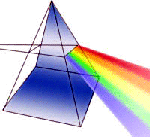 "The Hebrew verb used in this sentence for 'to seek' darash, is of the utmost importance for our theme. Its true sense is 'to deduce, interpret' the ideas which profound study of the text could elucidate. This process of deduction is called Midrash and is the system of interpretation employed throughout the rabbinic literature. By its aid a Scriptural passage yielded far more than could be discerned on the surface. The sacred words became an inexhaustible mine which, when quarried, produced rich treasures of religious and ethical teaching." — Rev. Dr. Cohen
"The Hebrew verb used in this sentence for 'to seek' darash, is of the utmost importance for our theme. Its true sense is 'to deduce, interpret' the ideas which profound study of the text could elucidate. This process of deduction is called Midrash and is the system of interpretation employed throughout the rabbinic literature. By its aid a Scriptural passage yielded far more than could be discerned on the surface. The sacred words became an inexhaustible mine which, when quarried, produced rich treasures of religious and ethical teaching." — Rev. Dr. Cohen 
 Genuine Come and Hear™ CDs do not contain executable programs. When making CDs, do not include any files that end in .exe, .com, .bat, .vbs, .doc, .pif, .sit, or .scr. The person receiving the CD should use his own browser to view the files. This helps to protect him from harmful programs and viruses.
Genuine Come and Hear™ CDs do not contain executable programs. When making CDs, do not include any files that end in .exe, .com, .bat, .vbs, .doc, .pif, .sit, or .scr. The person receiving the CD should use his own browser to view the files. This helps to protect him from harmful programs and viruses. 



